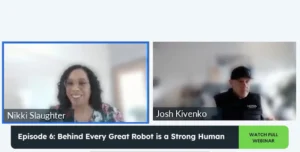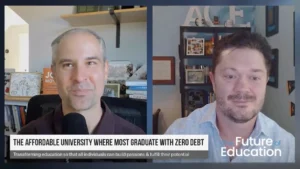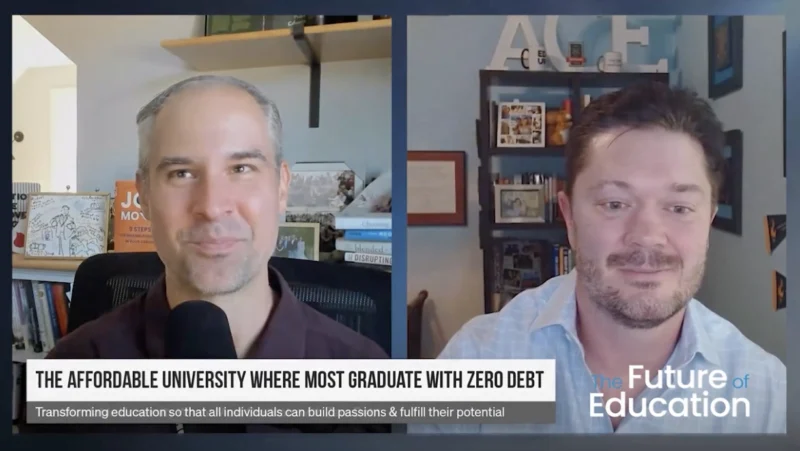Why Teaching Students to Analyze and Interpret Data is Critical
In the midst of a deadly pandemic and a presidential election, both of which are generating conflicting claims that may or may not be based on real data, teaching students to analyze the sources and presentation of online information and understand data has never been more important or timely.
Especially with so many students working from home and using the internet for research, educators have an opportunity to engage their students in meaningful and relevant analysis, as well as the development of critical thinking skills. During a recent edWebinar, Steven Anderson, a learning and relationship evangelist, explained how this process can occur and enable students to identify valid sources and accurate presentations of data.
Related content: Teaching critical thinking skills in the online classroom
As in the past, identifying correct information also requires an ability to recognize misinformation, disinformation, and outright untruths, so Anderson recommends providing a historical perspective on information manipulation, in addition to focusing on the latest techniques.
Understanding the past and present to understand data
Anderson believes students should know that the recent creation of deep-fake videos, which show real people saying things that have been manipulated or fabricated, is just one of the latest ways of spreading misleading or incorrect information. Older students should be taught historical examples of propaganda being used to manipulate people via newspapers, radio, and television. It may also be helpful for students to know about notable hoaxes, such as Orson Welles’ radio broadcast about an alien invasion.
To separate the fake from the real in 2020, students now need to understand the key types of misinformation and disinformation prevalent on the internet. These include misleading content designed to manipulate someone, and “imposter content” posted by someone pretending to be someone else. Students also need to be able to recognize false connections between data sets, like the claim that 5G towers are causing widespread coronavirus infections, when in fact the towers tend to be located in larger population areas where there are likely to be more infections, even without the towers.
Understanding the common sources of data on the internet is also crucial for students. A Wikipedia article, for example, is not a primary source but usually includes a list of primary sources that the article is based on, so students should review and consider the validity of those sources. Students also need to consider the organizations that are hosting web sites and distributing data online, in order to determine the validity of their information and their reasons for distributing it.
Navigating the digital domains
Ways to support analysis of online information include the use of checklists that can help students assess what they see and hear on the web. A commonly-used checklist uses the acronym CRAAP to focus students on considering whether data is Current, Relevant, Authoritative, and Accurate—and what its Purpose is.
To determine whether these attributes apply, educators should teach and model techniques such as checking the data to make sure the numbers are accurately calculated, examining the methodology that was used to generate the data, and considering the completeness of the data to see if key statistics were left out. Students should also be taught to look for and consider other data that may be more up-to-date or include additional important factors.
Anderson recommends teaching students what he call four key moves, which include using search engines to research an organization’s or author’s previous work, going “upstream” to original sources, and reading “laterally” to see what other current sources say about the same topic. After doing all that, the fourth move is to circle back to the first source and its data, to evaluate how they look in context.
Educators and students should also discuss important online data sources and tools that can be used to verify data. Anderson mentioned Google’s Dataset Search capabilities, which can provide transparency about underlying data and who collected it, and the Pew Research Center, which is explicit about its methodology and has extremely wide datasets that can be more reliable.
By teaching these types of information analysis techniques, educators will be developing 21st century skills that help students prepare for college and careers and also empower them to make good decisions as citizens and consumers.
About the presenter
Steven W. Anderson is a leader in the convergence of digital learning and leadership. As a former teacher and Director of Instructional Technology, he is highly sought after for his expertise in educational technology integration, using social media for learning, technology implementation efficacy, and creating meaningful School: Home Relationships. As @web20classroom he regularly travels the globe talking to schools, districts, and leaders about how they can be powerful change agents in education transformation. Steven has been a presenter and keynoter at several national and international educational technology conferences as well as numerous state and local conferences. He is the author of 3 books, The Relevant Educator: How Connectedness Empowers Learning, The Tech-Savvy Administrator and Content Curation: How To Avoid Information Overload. He is also credited with creating #edchat, the original and most popularly used educational hashtag on Twitter. Steven has been recognized with awards including being named a Microsoft Education Innovation Expert, Twitterer of the Year, a Top 10 Educational Influencer, one of the top Educational Innovators in the world in 2018, a Microsoft Heroes of Education award, along with a 2013 Bammy Award, recognized worldwide as the Educational Emmy, for his work with #edchat.
Join the community
Real World Literacy is a free professional learning community on edWeb.net where educators can collaborate on ways to help their students develop and refine essential digital and media literacy skills.
This edWeb broadcast was hosted by edWeb.net. View the recording of the edWebinar here.








